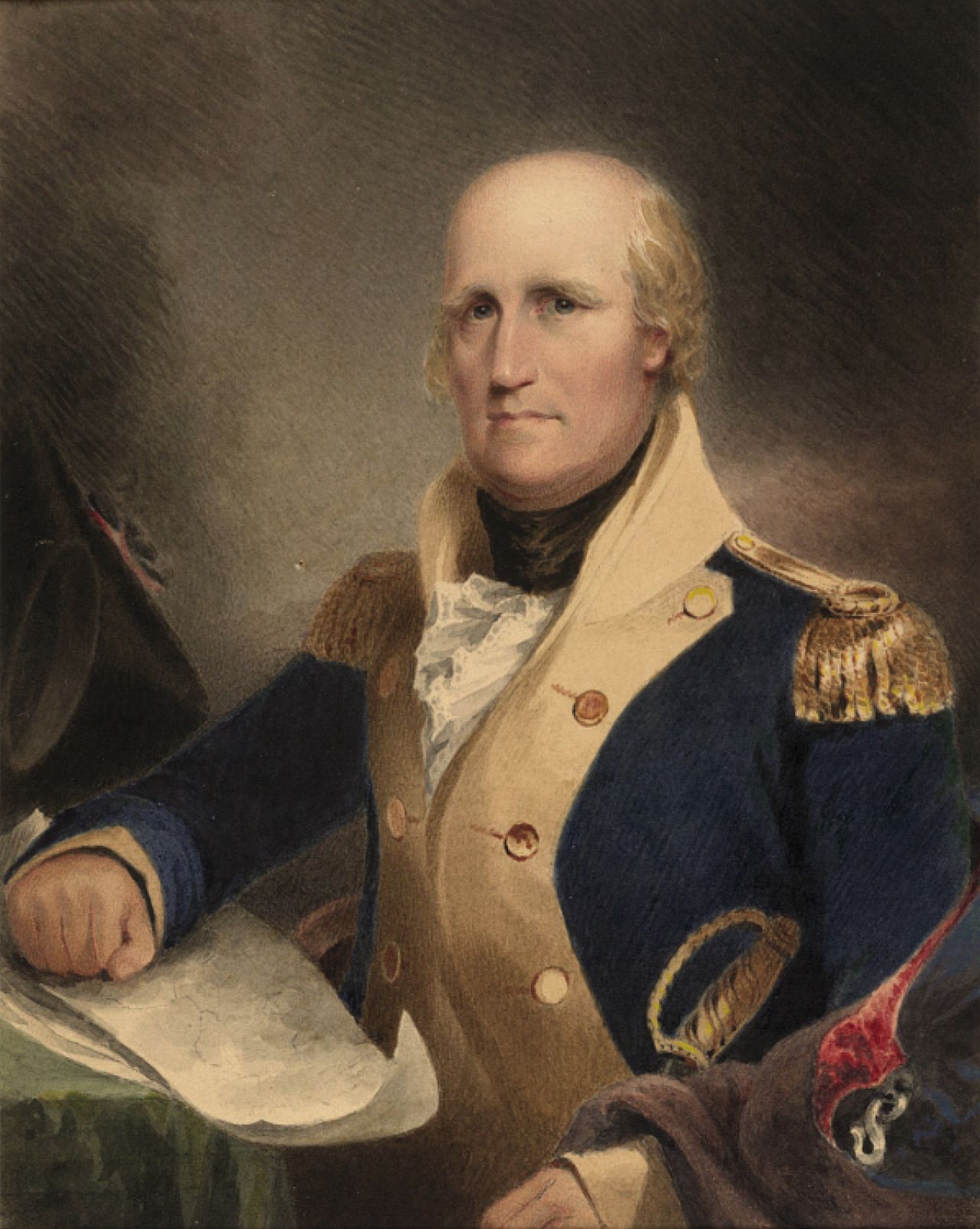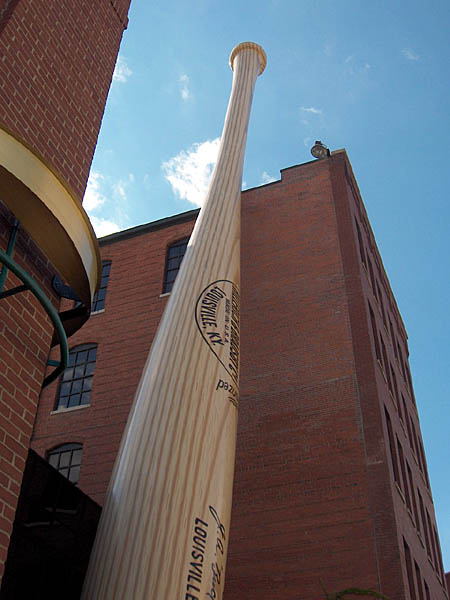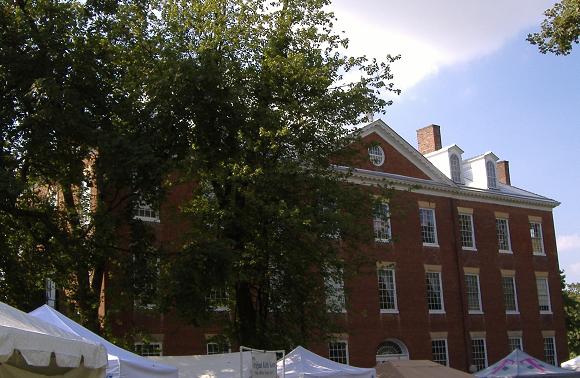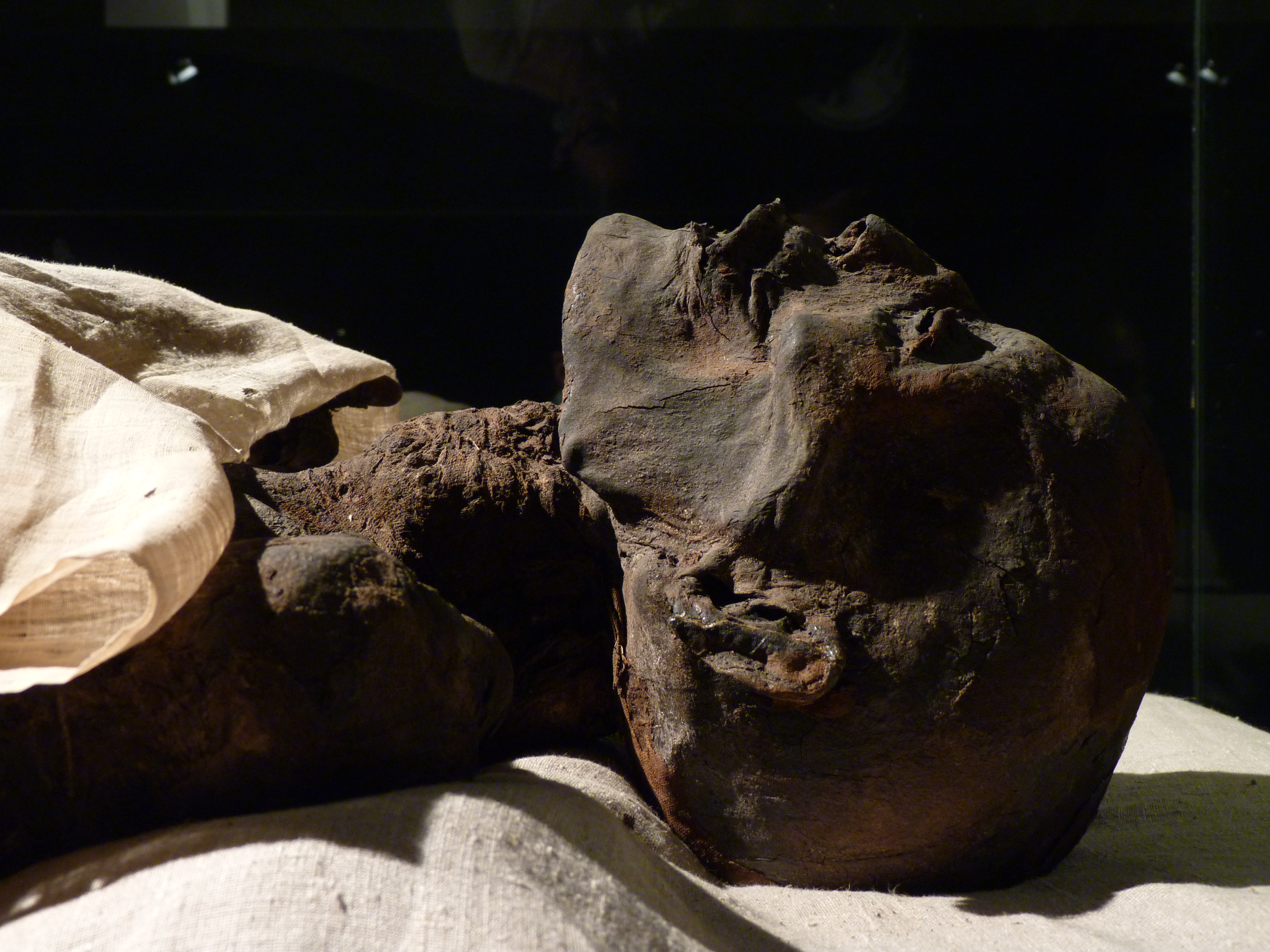|
Kentucky Science Center
The Kentucky Science Center, previously known as the Louisville Museum of Natural History & Science and then Louisville Science Center, is Kentucky's largest science museum. Located in Louisville, Kentucky, on "Museum Row" in the West Main District of downtown, the museum operates as a non-profit organization. It was founded in 1871 as a natural history collection. Many students in Kentucky take field trips to the Kentucky Science Center. There are about 550,000 visitors annually. A special hands-on area for children, featuring six educational activity sections, was renovated and renamed as ''KidZone'' in 1998. The building is located at 727 West Main Street and is about 150,000 sq ft (14,000 m2). The distinctive cast-iron facade limestone building was originally built in 1878 as a dry goods warehouse. The city purchased the property in 1975, and the museum moved to the premises in 1977, subsequently winning several design awards for its preservation of the building. A four-s ... [...More Info...] [...Related Items...] OR: [Wikipedia] [Google] [Baidu] |
Louisville, Kentucky
Louisville is the List of cities in Kentucky, most populous city in the Commonwealth of Kentucky, sixth-most populous city in the Southeastern United States, Southeast, and the list of United States cities by population, 27th-most-populous city in the United States. By land area, it is the country's List of United States cities by area, 24th-largest city; however, by population density, it is the 265th most dense city. Louisville is the historical county seat and, since 2003, the nominal seat of Jefferson County, Kentucky, Jefferson County, on the Indiana border. Since 2003, Louisville and Jefferson County have shared the same borders following a consolidated city-county, city-county merger. The consolidated government is officially called the Louisville/Jefferson County Metro Government, commonly known as Louisville Metro. The term "Jefferson County" is still used in some contexts, especially for Louisville neighborhoods#Incorporated places, incorporated cities outside the "Lou ... [...More Info...] [...Related Items...] OR: [Wikipedia] [Google] [Baidu] |
Pendulum
A pendulum is a device made of a weight suspended from a pivot so that it can swing freely. When a pendulum is displaced sideways from its resting, equilibrium position, it is subject to a restoring force due to gravity that will accelerate it back toward the equilibrium position. When released, the restoring force acting on the pendulum's mass causes it to oscillate about the equilibrium position, swinging back and forth. The time for one complete cycle, a left swing and a right swing, is called the period. The period depends on the length of the pendulum and also to a slight degree on the amplitude, the width of the pendulum's swing. Pendulums were widely used in early mechanical clocks for timekeeping. The regular motion of pendulums was used for timekeeping and was the world's most accurate timekeeping technology until the 1930s. The pendulum clock invented by Christiaan Huygens in 1656 became the world's standard timekeeper, used in homes and offices for 270 years, and ... [...More Info...] [...Related Items...] OR: [Wikipedia] [Google] [Baidu] |
Museums In Louisville, Kentucky
This is a list of museums, galleries and interpretive centers in the Louisville metropolitan area. Art * 21c Museum Hotel * Carnegie Center for Art & History (New Albany, Indiana) * KMAC Museum * Speed Art Museum Regional history * Falls of the Ohio State Park interpretive center, a museum covering the natural history related to findings in the nearby exposed Devonian fossil beds as well as the human history of the Louisville area * The Filson Historical Society, features a museum and extensive historical collections, currently undergoing major expansion * Frazier History Museum * Historic Locust Grove Visitors Center, which includes a museum * Howard Steamboat Museum (Jeffersonville, Indiana) * Kentucky Derby Museum * Kentucky Railway Museum (New Haven) * Louisville Slugger Museum & Factory * My Old Kentucky Home State Park ( Bardstown) * Portland Museum * Riverside, The Farnsley-Moremen Landing Visitors Center, which includes a museum * Thomas Edison Ho ... [...More Info...] [...Related Items...] OR: [Wikipedia] [Google] [Baidu] |
Museums Established In 1871
A museum is an institution dedicated to displaying or Preservation (library and archive), preserving culturally or scientifically significant objects. Many museums have exhibitions of these objects on public display, and some have private collections that are used by researchers and specialists. Museums host a much wider range of objects than a library, and they usually focus on a specific theme, such as the art museums, arts, science museums, science, natural history museums, natural history or Local museum, local history. Public museums that host exhibitions and interactive demonstrations are often tourist attractions, and many draw large numbers of visitors from outside of their host country, with the List of most-visited museums, most visited museums in the world attracting millions of visitors annually. Since the establishment of Ennigaldi-Nanna's museum, the earliest known museum in ancient history, ancient times, museums have been associated with academia and the preserva ... [...More Info...] [...Related Items...] OR: [Wikipedia] [Google] [Baidu] |
Natural History Museums In Kentucky
Nature is an inherent character or constitution, particularly of the ecosphere or the universe as a whole. In this general sense nature refers to the laws, elements and phenomena of the physical world, including life. Although humans are part of nature, human activity or humans as a whole are often described as at times at odds, or outright separate and even superior to nature. During the advent of modern scientific method in the last several centuries, nature became the passive reality, organized and moved by divine laws. With the Industrial Revolution, nature increasingly became seen as the part of reality deprived from intentional intervention: it was hence considered as sacred by some traditions (Rousseau, American transcendentalism) or a mere decorum for divine providence or human history (Hegel, Marx). However, a vitalist vision of nature, closer to the pre-Socratic one, got reborn at the same time, especially after Charles Darwin. Within the various uses of the word t ... [...More Info...] [...Related Items...] OR: [Wikipedia] [Google] [Baidu] |
Science Museums In Kentucky
Science is a systematic discipline that builds and organises knowledge in the form of testable hypotheses and predictions about the universe. Modern science is typically divided into twoor threemajor branches: the natural sciences, which study the physical world, and the social sciences, which study individuals and societies. While referred to as the formal sciences, the study of logic, mathematics, and theoretical computer science are typically regarded as separate because they rely on deductive reasoning instead of the scientific method as their main methodology. Meanwhile, applied sciences are disciplines that use scientific knowledge for practical purposes, such as engineering and medicine. The history of science spans the majority of the historical record, with the earliest identifiable predecessors to modern science dating to the Bronze Age in Ancient Egypt, Egypt and Mesopotamia (). Their contributions to mathematics, astronomy, and medicine entered and shaped the Gree ... [...More Info...] [...Related Items...] OR: [Wikipedia] [Google] [Baidu] |
Museums In Kentucky
A museum is an institution dedicated to displaying or preserving culturally or scientifically significant objects. Many museums have exhibitions of these objects on public display, and some have private collections that are used by researchers and specialists. Museums host a much wider range of objects than a library, and they usually focus on a specific theme, such as the arts, science, natural history or local history. Public museums that host exhibitions and interactive demonstrations are often tourist attractions, and many draw large numbers of visitors from outside of their host country, with the most visited museums in the world attracting millions of visitors annually. Since the establishment of the earliest known museum in ancient times, museums have been associated with academia and the preservation of rare items. Museums originated as private collections of interesting items, and not until much later did the emphasis on educating the public take root. Etymology The ... [...More Info...] [...Related Items...] OR: [Wikipedia] [Google] [Baidu] |
List Of Museums In The Louisville Metropolitan Area
This is a list of museums, galleries and interpretive centers in the Louisville metropolitan area. Art * 21c Museum Hotel * Carnegie Center for Art & History (New Albany, Indiana) * KMAC Museum * Speed Art Museum Regional history * Falls of the Ohio State Park interpretive center, a museum covering the natural history related to findings in the nearby exposed Devonian fossil beds as well as the human history of the Louisville area * The Filson Historical Society, features a museum and extensive historical collections, currently undergoing major expansion * Frazier History Museum * Historic Locust Grove Visitors Center, which includes a museum * Howard Steamboat Museum (Jeffersonville, Indiana) * Kentucky Derby Museum * Kentucky Railway Museum (New Haven) * Louisville Slugger Museum & Factory * My Old Kentucky Home State Park ( Bardstown) * Portland Museum * Riverside, The Farnsley-Moremen Landing Visitors Center, which includes a museum * Thomas Edison Ho ... [...More Info...] [...Related Items...] OR: [Wikipedia] [Google] [Baidu] |
List Of Attractions And Events In The Louisville Metropolitan Area
This is a list of visitor attractions and annual events in the Louisville metropolitan area. Annual festivals and other events Spring * Abbey Road on the River, a salute to The Beatles with many bands, held Memorial Day weekend in Louisville 2005–2016, but moved across the river to Jeffersonville, Indiana in 2017 * Frankfort Avenue Easter Parade – Held annually since 1993, the Frankfort Avenue Easter Parade is a family-friendly event that takes place each April in the Crescent Hill and Clifton neighborhoods of Louisville. * Cherokee Triangle Art Fair, held the weekend before the Kentucky Derby * ConGlomeration, a multigenre convention held in April * Highland Renaissance Festival in Eminence, festivities that reproduce aspects of Scottish life during the Renaissance period, along with highland games, held from late May through early July * Hillbilly Outfield: Kentucky Derby party ( Middletown), held in early May to coincide with the Kentucky Derby * Kentucky Derby ... [...More Info...] [...Related Items...] OR: [Wikipedia] [Google] [Baidu] |
Mummy
A mummy is a dead human or an animal whose soft tissues and Organ (biology), organs have been preserved by either intentional or accidental exposure to Chemical substance, chemicals, extreme cold, very low humidity, or lack of air, so that the recovered body does not Corpse decomposition, decay further if kept in cool and dry conditions. Some authorities restrict the use of the term to bodies deliberately embalming, embalmed with chemicals, but the use of the word to cover accidentally desiccation, desiccated bodies goes back to at least the early 17th century. Mummies of humans and animals have been found on every continent, both as a result of natural preservation through unusual conditions, and as cultural artifacts. Over one million Animal mummy, animal mummies have been found in Egypt, many of which are cats. Many of the Egyptian animal mummies are African sacred ibis, sacred ibis, and radiocarbon dating suggests the Egyptian ibis mummies that have been analyzed were from ... [...More Info...] [...Related Items...] OR: [Wikipedia] [Google] [Baidu] |
Third Intermediate Period
The Third Intermediate Period of ancient Egypt began with the death of Pharaoh Ramesses XI in 1077 BC, which ended the New Kingdom, and was eventually followed by the Late Period. Various points are offered as the beginning for the latter era, though it is most often regarded as dating from the foundation of the Twenty-Sixth Dynasty by Psamtik I in 664 BC, following the departure of the Nubian Kushite rulers of the Twenty-fifth Dynasty after they were driven out by the Assyrians under King Ashurbanipal. The use of the term "Third Intermediate Period", based on the analogy of the well-known First and Second Intermediate Periods, was popular by 1978, when British Egyptologist Kenneth Kitchen used the term for the title of his book on the period. While Kitchen argued that the period was 'far from being chaotic' and hoped that his work would lead to the abolishment of the term, with his own preference being the 'Post-Imperial epoch', his use of the term as a title se ... [...More Info...] [...Related Items...] OR: [Wikipedia] [Google] [Baidu] |
Tchaenhotep
Tchaenhotep (aka ThenHotep) pronounced Cha-en-hotep, is a female Third Intermediate Period mummy. Currently, Tchaenhotep is on display at the Kentucky Science Center in Louisville, Kentucky, United States. Name and life The meaning of her name is "the one who is content". Tchaenhotep lived somewhere between c. 1069 BC and c. 664 BC. Tchaenhotep died at an early age between 25 and 35 years old. She was one of eight in her family to be buried in the famous Valley of the Queens. At the time of her death the valley was no longer used for royal burials. She was buried along with forty-two other mummies. Tomb and coffin Tchaenhotep's tomb was located by Italian Egyptologist Ernesto Schiaparelli in 1903. A dig that was commissioned by the Egyptian government. Schiaparelli was noted to have also discovered Queen Nefertari’s tomb in the Valley of the Queens. The catalogue number 2-2-1 is painted on the bottom of Tchaenhotep’s coffin. The purpose was to help identify the burial site in ... [...More Info...] [...Related Items...] OR: [Wikipedia] [Google] [Baidu] |








